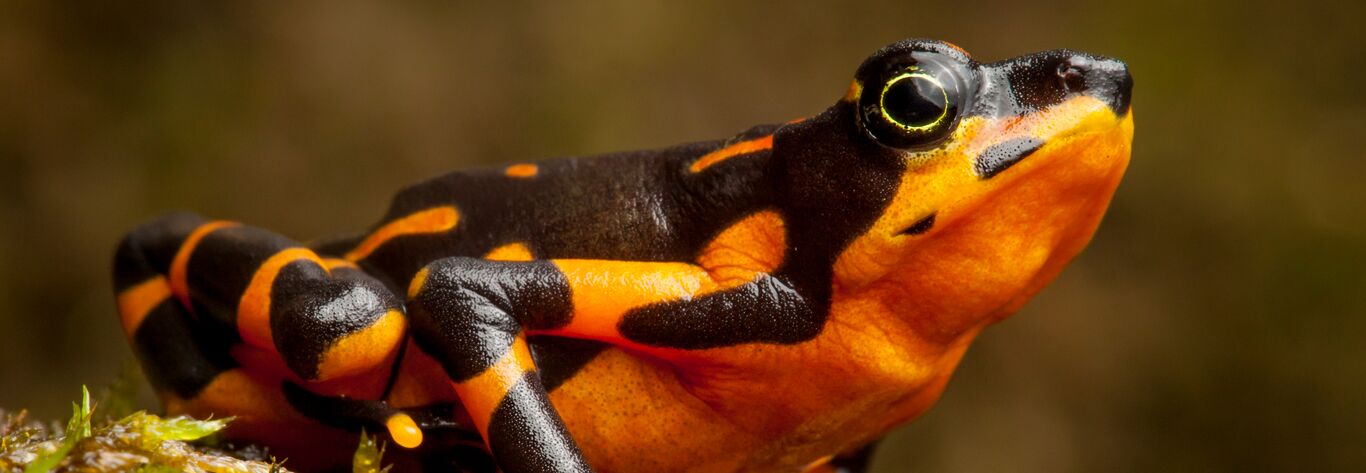

Across the Neotropics, from Costa Rica in the north to Bolivia in the south and in nine countries in between, the forests are speckled with the colors of the rainbow in part thanks to a diverse and vibrant group of amphibians called harlequin toads. These beautiful and charismatic toads come in orange, green, yellow, brown, black and sometimes even purple, earning them the nickname “clown frogs.”
Harlequin toads are committed breeders, often spending weeks in amplexus (the frog breeding hug), during which time the males forgo food and can lose up to 30 percent of their body weight on this “love diet.” During the breeding season, they come down to the riverbanks to woo potential mates, and some species even wave across the water to catch the attention of a female toad.
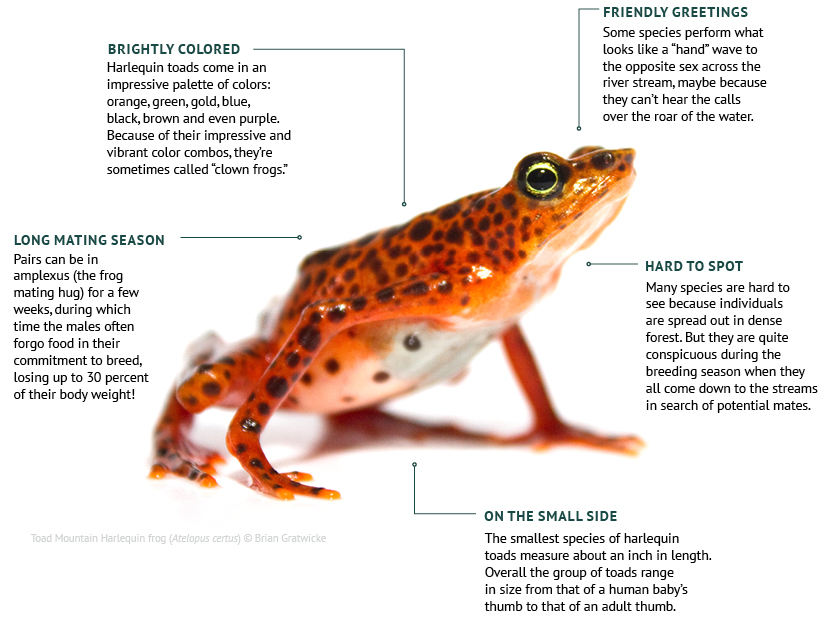
In some places, harlequin toads have been imbued with tremendous cultural value. In Panama, for example, the striking Panamanian Golden Toad (Atelopus zeteki) is the national animal, found on lottery tickets and artwork in markets, and celebrated once a year through a government decree that declared Panamanian Golden Toad Day every August 14. Harlequin toads also have cultural significance for some indigenous communities, including those in Colombia’s Sierra Nevada de Santa Marta, who consider frogs to be a symbol of fertility and ecosystem health. Outside of these examples, however, harlequin frogs are among the species that receive little public attention but are among the most imperiled, much like many of the species that Global Wildlife Conservation works to save. Read more in the English or Spanish version of our Harlequin Toad Fact Sheet.
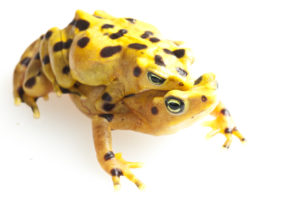
Panamanian Golden Toad, Atelopus zeteki. Photo by: Robin Moore
Despite their important role in cultures across the Neotropics, and their vital role in the ecosystems in which they live (including as indicators of water quality), entire species of harlequin toads started vanishing in the mid ‘80s, shocking biologists and spurring conservationists to action. A deadly infectious disease called chytridiomycosis (chytrid for short) had begun its spread through the Neotropics—and continues its destruction today. Chytridiomycosis affects the skin and prevents frogs from being able to “drink” water and breathe through their skin, and absorb salts, ultimately resulting in what is akin to a heart attack in the animals.
This pathogen, combined with habitat destruction and degradation, introduction of invasive species such as Rainbow Trout, and the effects of climate change, has left 80 of the 96 harlequin toad species Endangered, Critically Endangered, Extinct or, like the Panamanian Golden Toad, Extinct in the Wild according to the IUCN Red List of Threatened Species. As of 2018, 37 harlequin frog species had disappeared from their known homes and have not been seen since the early 2000s, despite efforts to find them.
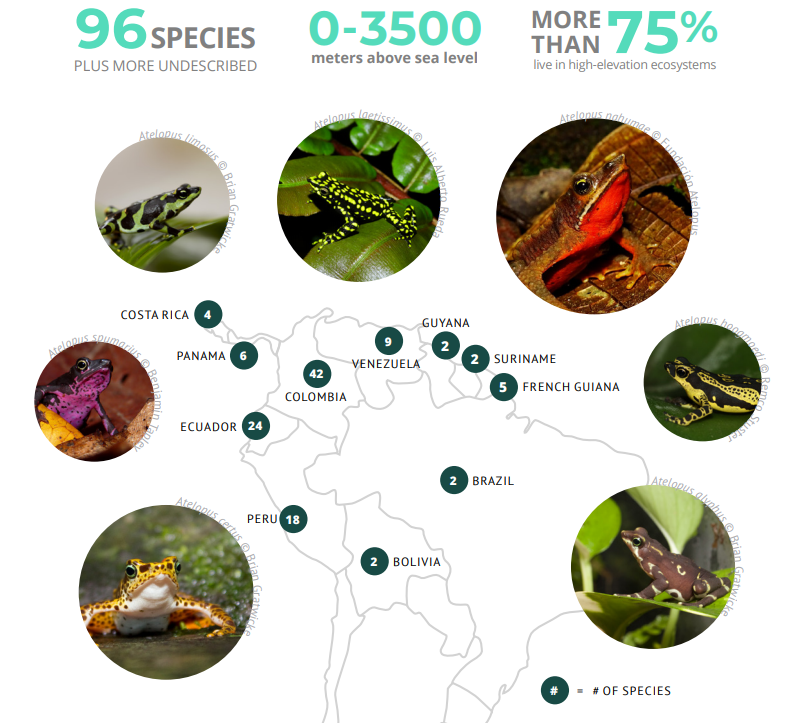
Most harlequin toads live along mid-to-high elevation streams—a habitat commonly associated with amphibian declines. Although harlequin toads are among the most threatened group of amphibians in the world, some species have proven to be resilient against all odds. For example, researchers in Ecuador rediscovered the Longnose Harlequin Frog, a species feared extinct and lost to science since 1989. Another team in Panama found that some of the frog species most susceptible to chytrid have developed better defenses to fight the disease and as a result have started to rebound even after biologists feared they may be extinct.
Global Wildlife Conservation, in partnership with the IUCN SSC Amphibian Specialist Group, Amphibian Survival Alliance, Amphibian Ark, Panama Amphibian Rescue and Conservation Project, and others, is spearheading efforts to develop and foster a coordinated harlequin toad conservation network committed to ensuring we don’t lose these jewels forever. The network includes national and international conservation groups and zoos, academic institutions and governments working together to implement substantial, long-term, range-wide conservation measures for this unique group of amphibians. The Atelopus Survival Initiative and the members of the network will together aim to:
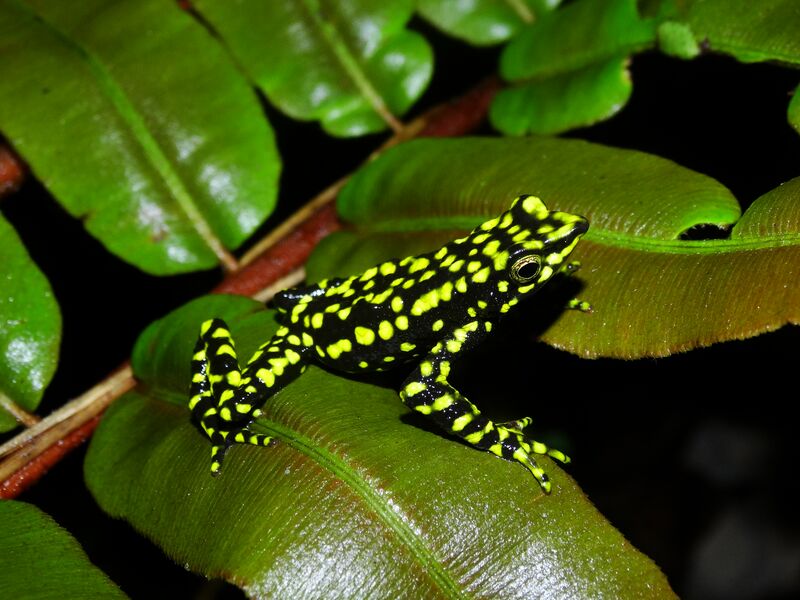
A. laettisimus, endemic to Sierra Nevada. Photo courtesy of Fundacion Atelopus.
As part of the Atelopus Survival Initiative, GWC has partnered with Fundación Atelopus to ensure the survival of harlequin toads in Sierra Nevada de Santa Marta in Colombia, one of the last-surviving high-elevation harlequin toad populations. This includes monitoring their populations and establishing conservation actions through community-based solutions to maintain healthy amphibian populations and their critical habitats.
In these ways, GWC and partners hope to reduce the drivers of harlequin toad declines, increase the amount of harlequin toad habitat that is protected across the Neotropics, and build local capacity for the long-term conservation of these amphibians. Protecting harlequin toad habitat will also benefit those amphibians and additional species that share their home, the ecosystems in which they live, and ultimately all life on Earth.
Top photo: Variable Harlequin Toad, Robin Moore/GWC
Your support will help provide these essential initiatives and tools to restore harlequin toads and protect their habitat.
Survey priority sites and species to generate baseline population data that can allow us to track change in the status of surviving harlequin toad populations and the threats they face, and assess the effectiveness of conservation actions.
Evaluate disease presence and prevalence in wild harlequin toad populations to develop preventive and mitigating measures. Additionally, by monitoring disease presence we can identify disease arrival and outbreak and develop conservations strategies accordingly.
Work with our partners and use baseline data on population and survival status to develop site-specific and species-specific community-based conservation actions to reduce threats to harlequin toads.
Work with in-country and international zoos to improve local conservation breeding capacity of priority species in need of such programs. Develop captive breeding programs in-country for priority species for future reintroduction, while continuing to identify and mitigate threats in the wild.
Initiate communications campaigns to improve awareness and appreciation of harlequin toads and improve political support for harlequin toad conservation.
Create a network of national herpetologists and conservationists to share information, provide resources, and provide mentoring opportunities.
| Species Red List Status | Population | Location Status | Partners |
|---|---|---|---|
Varies by species | From Costa Rica in the north to Bolivia in the south |